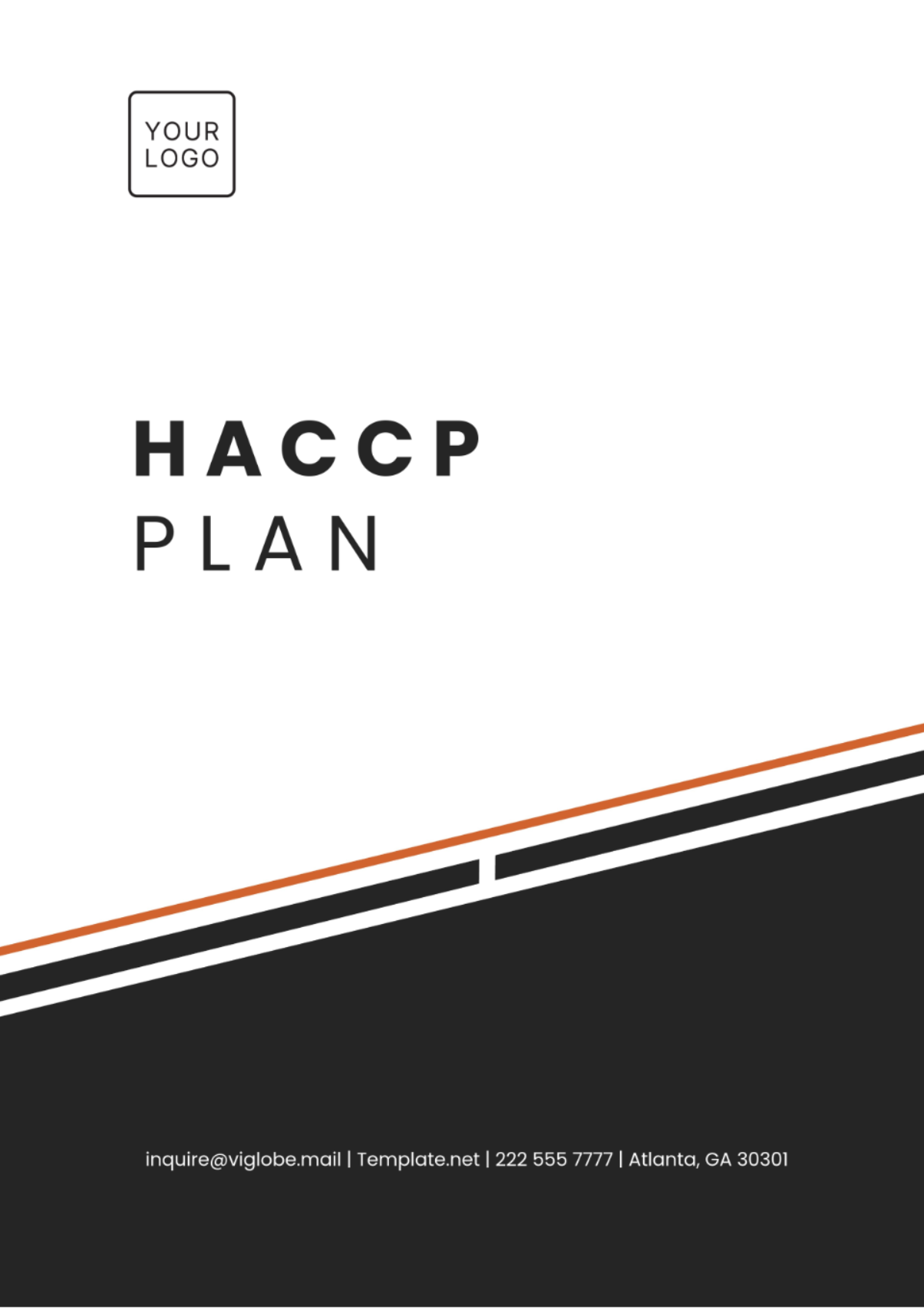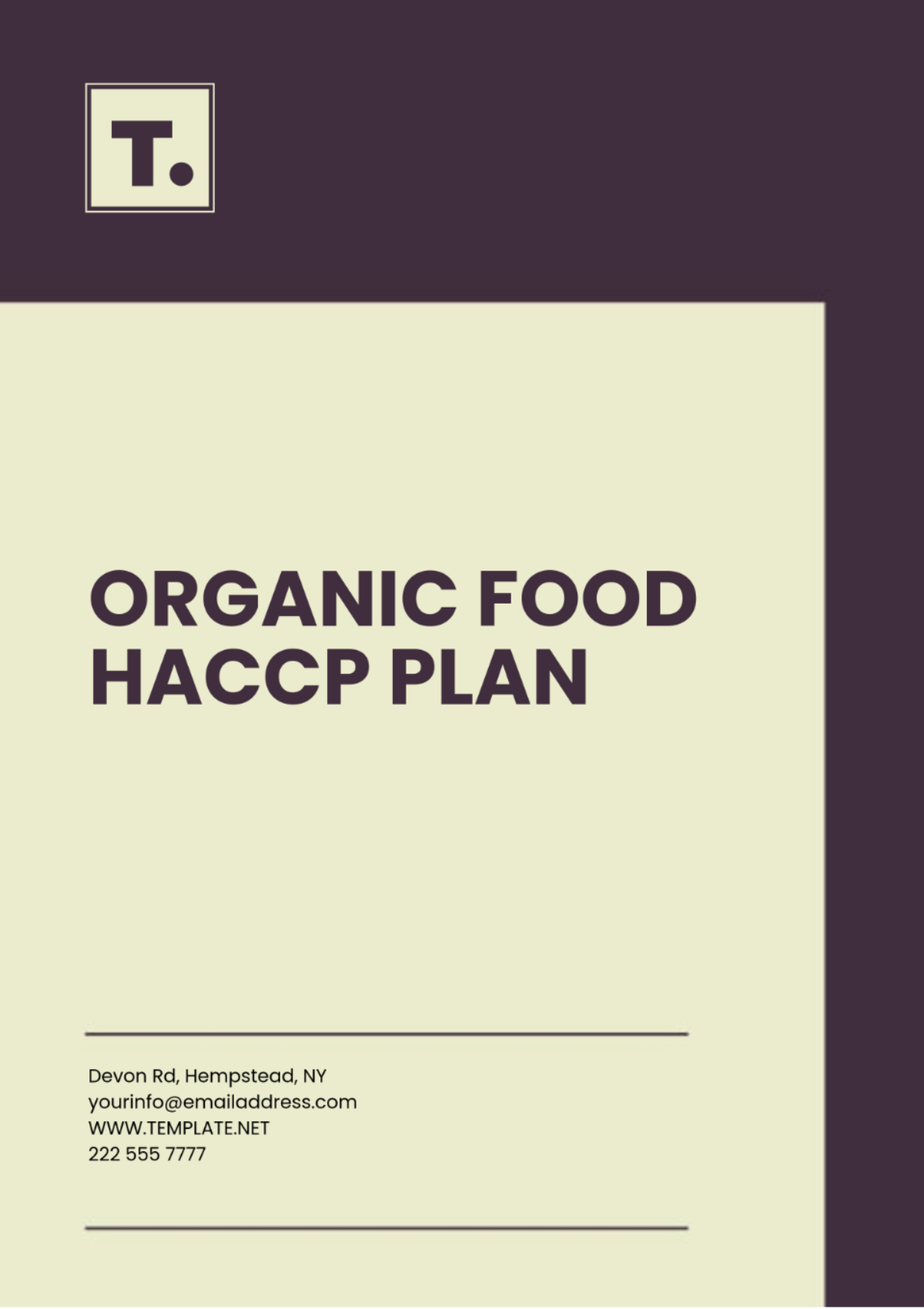HACCP Plan
Date: January 10, 2060
Prepared by: [YOUR NAME]
I. Introduction
The Hazard Analysis and Critical Control Point (HACCP) plan is designed to ensure food safety by identifying and controlling biological, chemical, and physical hazards. This plan is specifically tailored for the Food Processing Plant, which processes ready-to-eat meals. We aim to proactively prevent food safety hazards to protect consumers and maintain compliance with food safety regulations.
II. Goals and Objectives
A. Goals
Maintain the safety and quality of the Food Processing Plant products.
Ensure compliance with national and international food safety standards.
Enhance consumer confidence and satisfaction.
B. Objectives
Identify potential hazards at each stage of the production process by 2060.
Establish CCPs and implement monitoring by mid-2061.
Train staff on HACCP protocols by the end of 2060.
III. Action Plan
Conduct a hazard analysis to identify potential food safety hazards.
Determine critical control points (CCPs) to prevent or eliminate hazards.
Establish critical limits for each CCP.
Develop monitoring procedures to ensure control at each CCP.
Establish corrective actions for deviations from critical limits.
Verify the effectiveness of the HACCP system regularly.
Maintain documentation and records for verification and auditing purposes.
IV. Timeline
Action Item | Start Date | End Date |
|---|---|---|
Conduct Hazard Analysis | January 2060 | March 2060 |
Determine CCPs and Establish Limits | April 2060 | June 2060 |
Develop Monitoring Procedures | July 2060 | August 2060 |
Staff Training on HACCP Protocols | September 2060 | October 2060 |
Implementation of the HACCP Plan | November 2060 | December 2061 |
V. Resources Needed
Qualified HACCP-certified consultants.
Online and in-person HACCP training modules.
Monitoring and testing equipment for CCPs.
Access to relevant food safety regulations and guidelines.
Internal documentation management system for record-keeping.
VI. Monitoring and Evaluation
Continuous monitoring of the HACCP plan will involve regular inspections and audits conducted both internally and by third-party entities. Evaluation metrics will include adherence to critical limits, incident response times, staff training effectiveness, and feedback from audits. Quarterly reviews during the first year post-implementation will be conducted to ensure compliance and address any deficiencies promptly.
VII. Conclusion
Ensuring the health and safety of our consumers, complying with regulatory requirements, and achieving overall business success greatly depend on the successful implementation of the Hazard Analysis Critical Control Point (HACCP) plan at the Food Processing Plant. By adhering to the comprehensive and detailed guidelines and timelines outlined in this plan, we can not only guarantee the production of safe food but also bolster and enhance our reputation within the market.





























